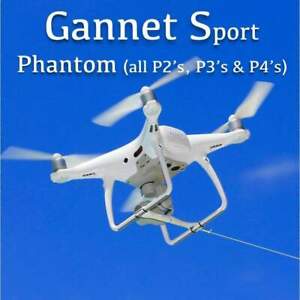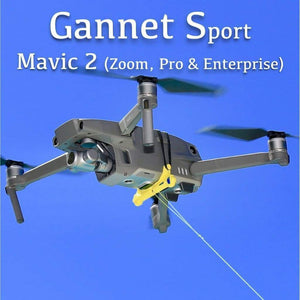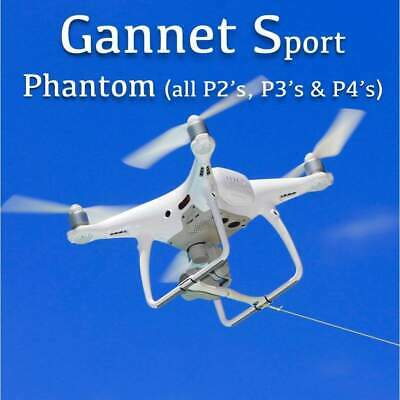
New Zealand has an exciting new method of fishing, drone fishing. This exciting new technique utilizes the latest in drone technology and opens up a whole new world of fishing possibilities. Drone Fishing NZ and DJI are the best places to buy a drone for fishing. You can also find Splash drones and GoFish cameras, as well as custom-built fishing rigs.
Aerokontiki Drones
For a better picture of what you're doing, try a fishing drone like the Fishhawk, a product of Sharkan. The drone's stabilized camera can shoot 12-megapixel photos at 30 frames per second and 4k UHD video at 12MP. The videos can also be viewed from your smartphone. The drone offers a range of good transmission and flight time, as well as a spare batteries that can be charged.
Mobula
Mobula drones were specifically created for fishing. The drone's buoyancy and IP56 rating means it can withstand winds up to 20 km/h. It also has built-in safety features, including automatic return to home, automatic payload release, and 3 different release mechanisms. It will also automatically return to water if it runs low on battery so you don't need to worry about losing it.
Banks'
Fishing drones have become a hugely popular trend that has attracted the attention of both anglers as well as sports enthusiasts. A drone can present its own set of challenges. The drone is not recommended for fishing in shallow water. A second problem arises when a drone crashes in the same location a second time. If that happens, you can't always trust the information you get from the video.

SplashDrone 4
For the ultimate in water sports and recreational use, Swellpro has created the waterproof SplashDrone 4 drone with a brand-new float platform. It can be used to fish and other water activities. The drone is made of corrosion-resistant materials as well industrial-grade ABS to withstand harsh conditions. Smooth+ is the SplashDrone 4’s exclusive flight control system. This gives the user full control over the drone and keeps it stable in any environment. Its advanced technology allows it to capture every angle and every moment from the sky.
Drone for fishermen
If you're a New Zealand Fisherman Drone fisherman, then you're in for a real treat. Drone fishing enthusiasts prize snappers as a highly sought-after species. They are beautiful to look at and taste great! They can be found along the North and South coasts of the South islands. These fish can be caught in the summer, but they are also plentiful in the fall.
Flying a drone
You should be aware of the following guidelines if you are planning to fly a drone in New Zealand for drone fishing. The law is the first thing you need to know. It is against the law to fly your drone over marine life, or within 500 metres of any marine mammal. It is important to pay attention to your surroundings while flying your drone. This will prevent your expensive drone from being confiscated.
A drone's payload
A drone can be used for fishing. However, you need to consider the payload. It is important to choose a drone that has the payload capacity to transport heavy fish, and can fly for long periods of time. If your drone is only used for a short time, it will not catch enough fish to be worthwhile. The technology behind drone fishing in New Zealand has improved.

FAQ
What US states have drones made legal?
You can legally operate a drone for hobby purposes. Federal Aviation Administration (FAA), has issued guidelines that allow you to use small unmanned aircraft systems (UASs). These UASs must first be registered with FAA to be allowed to be flown. These UASs can also be flown by commercial operators if they are allowed to fly under certain conditions.
How do you travel with a drone?
Drones are becoming increasingly popular for both personal use and commercial purposes. They are used to film, fly, map, rescue and search and rescue. New regulations were approved by the FAA, which includes requirements for registration, licensing pilot training and insurance. These changes will help ensure that drones stay safe for all.
Do I need to be able to fly a drone without special training?
No, you don't need special training to fly your drone. You only need a remote controller unit and basic knowledge about flight mechanics.
Statistics
- With the top 10% making over $100/h and the bottom 10% making as low as $10/h. (dronesgator.com)
- According to the multiple listing service (MLS), houses and apartments with drone photographs are up to 68 percent more likely to sell than those without pictures. (thedroneu.com)
- According to Indeed, a drone pilot gets paid $25.73 per hour on average in the US. (dronesgator.com)
External Links
How To
How to Fly Drones With Beginners
A drone refers to a remote-controlled aircraft designed for aerial photography, surveillance and scientific research. The technology behind drones has been around since World War II. DJI introduced their Phantom series of quadcopters in 2010, but commercial use only began in 2010. Since then, there have been many different types of drones available, from beginner-friendly models like the Parrot AR Drone 2.0 to professional-grade multi-rotor craft like the DJI Mavic Pro.
You can fly a drone in many different ways, including:
-
Remote control - This method uses a control device attached to your hand, which enables you to steer the drone through its flight path. There are two main types: Joysticks (like a radio), and On/Off switches (like an alarm clock).
-
Manual Control – This method lets users remotely control the drone by using a smartphone app. You must keep track of the location where you want the drone to go and follow the instructions from the app.
-
Autonomous flight - The drone takes over the piloting duties. It's basically flying autonomously without any human intervention. The drone must be equipped with a camera and sensors that can capture images and data in order to fly autonomously.
-
Triggered Flight – This method is very similar to manual flight. The pilot creates a route that the drone will follow until it reaches the destination. After the preprogrammed route is complete, the drone will automatically land and return to its base.
-
Landing Gear: Some drones have landing gear that allows them safely to land in case they lose power or run low on battery.
-
Goggles - Pilots may wear goggles to shield themselves from flying debris.
-
Camera - Some drones are equipped with cameras allowing you to capture photos and videos from above.
-
Obstacles. Some drones can have obstacle avoidance technology that stops them from hitting obstacles.
-
Speed - Some drones can reach speeds of over 40 mph.
-
Battery Life – Most drones will last 20 minutes to three hours depending on how powerful they are.
-
Some drones have a range of up to 30 miles, depending on their model.
-
Power source – Some drones require external power sources, others require internal batteries.
-
Weight – Some drones are less than one pound, while other models can be up to four pounds.
-
Size - Drones can range in size from tiny devices that can fit in your palm to heavy crafts that weigh 50 pounds.
-
Price - Drones come in a variety of price categories, including high-end models which can run into the thousands and low-cost options that can start at $100.